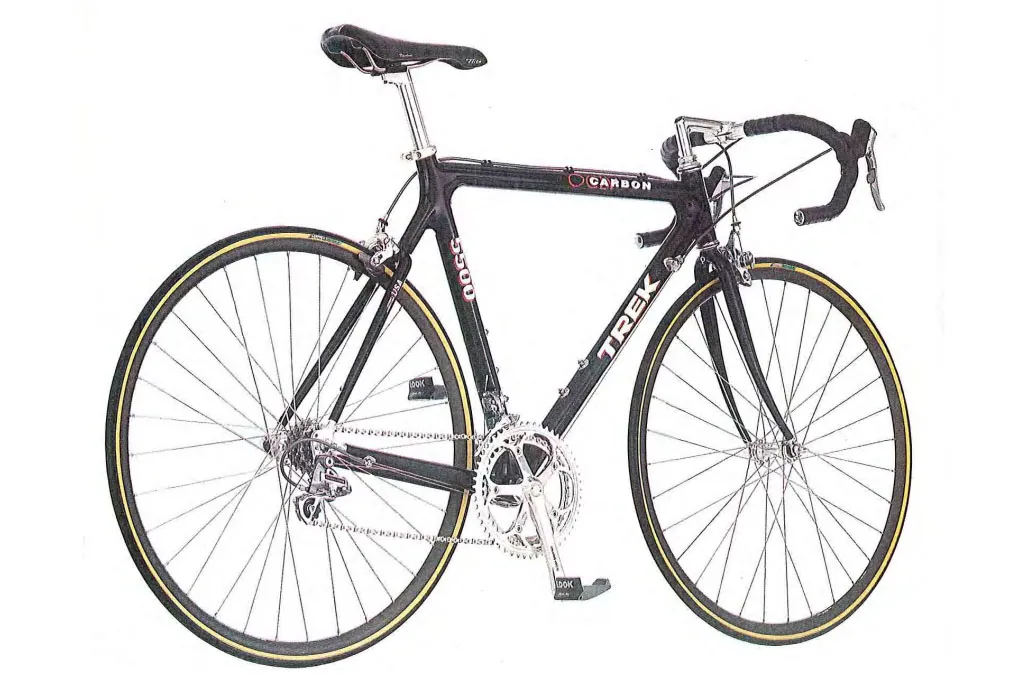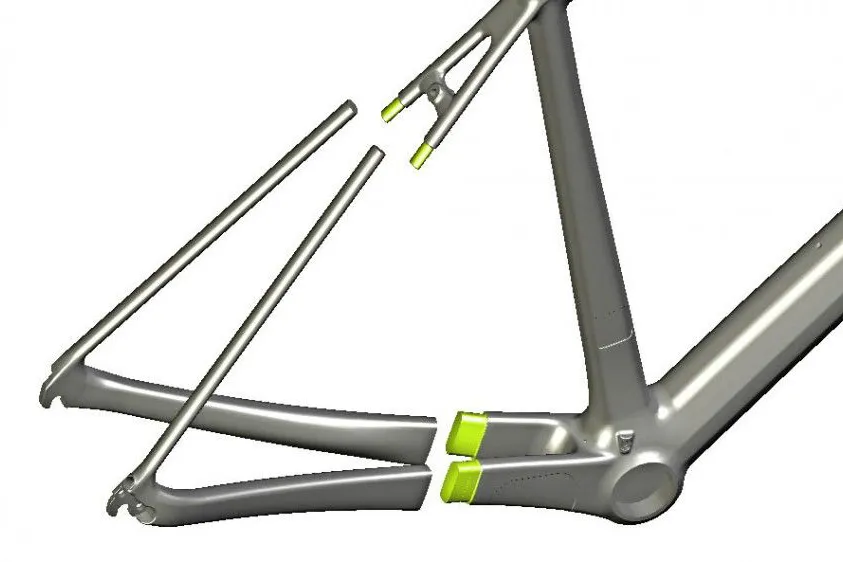Carbon is old enough to vote. It’s saving up for a deposit on its first house. It’s getting a dog as a practice child. What I’m trying to say is, carbon has been around for a long time, and it’s fair to say that it’s fully matured as a material out of which to make bicycles.
Now that carbon is so well established, does it finally hold retro appeal? I’m not sure. It’s certainly earned its place in history, but that doesn’t mean it’s actually appealing to the wider cycling public, particularly given the sport’s fixation on the new and shiny.
- This is why it’s time to stop buying cheap carbon bikes
- There is more to life than cycling (and that’s okay)
Things tend to follow a certain pattern when it comes to how they’re valued and whether they’re perceived as cool.
New stuff is automatically edgy and exciting. Slightly old stuff is boring and passé, and properly old things, if they were interesting enough to begin with, become cool and collectable. Sometimes.
Trek’s first carbon road bikes are perhaps a good case study. The 5500 and 5200 OCLV launched way back in 1992, the same year Ford brought out the first Mondeo and Microsoft debuted Windows 3.1.

To modern eyes, these bikes look utterly dated. The main frame tubes appear oddly skinny next to an enormously chunky seat cluster and head tube, while the 1in quill stem, external headset and slim fork legs look positively emaciated.
It’s very noticeable how much more metal is on display on bikes of this era — the main frame is carbon, but there are metal dropouts, headset cups, bottom bracket inserts, cable guides and more.
Truncated aerofoils and integrated-everything were still decades away at this point, so cables are fully external and these bikes were typically fitted with lightweight, ultra-low-profile alloy wheels, the antithesis of deep-section carbon.
Is the 5500 cool? With appreciation of what it represents, I think it is, but I’d also say it lacks the elegance of truly classic machines — think Eroica-style steel — and looks ungainly and crude compared to current bikes.

Going further back, Look’s KG86 is certainly deserving of classic status, being one of the earliest production carbon frames as well as the bike on which Greg LeMond won the 1986 Tour de France.
It’s a far cry from the monocoque machines that came later, constructed with simple straight carbon tubes that meet at metal lugs.
Aesthetically, it closely resembles its steel contemporaries and if you painted over its carbon tubes it would be hard to tell it apart from its ferrous brethren.
https://www.instagram.com/p/Bfu_tpJD0Yx/
Leaving aside its historical significance, the Look is just pretty. Everything is in proportion and the slender lines speak to light weight and performance.
But while it’s desirable and interesting, I wouldn’t even place the Look in the same category as modern carbon because they have so little in common with one another.
Jumping forwards again, the bikes of the 2000s feel much more familiar.
Scott launched the original CR1 in 2003 and it arguably marked the start of a new era of lightweight bikes, using an ingenious variant on tube-to-tube construction that did away with completely with lugs and reduced the amount of material needed to create a strong frame.

Over time, this style of construction evolved into something more closely resembling a true monocoque (where the joints are constructed as a whole rather than created by joining tubes) although I use this term advisedly as even very lightweight modern frames often have multiple sub-assemblies that slot into one another. (And yes, there are still fully-lugged hold-outs such as Colnago’s C-series bikes, but they’re the exception.)

The CR1 looks somewhat dated when it’s built with noughties components and the way it wears its carbon on its sleeve, rather than hiding it under paint, is very much of its time.

It’s a fundamentally modern bike however, and if you built one with a current groupset and the latest finishing kit, it could almost pass as a new machine.
Again, I think the CR1 is cool because of what it represents, but it’s also too new in my opinion to have any retro charm.
What you perceive to be cool is also heavily influenced by your age and experience. Raleigh can charge £600 for a replica Burner because the Generation-X kids that lusted after Burners in the eighties have grey hair and money now, and nostalgia is a powerful drug.
I got seriously into cycling in the late 2000s when the first generation Scott Addict was new and Mark Cavendish was dominating sprints on his Columbia–HTC team bike.

Partly influenced by his successes, I bought my own Addict, with the second-tier HMF frame because I’m not rich. It’s still a bike I hold close to my heart, the standard against which every subsequent purchase and test bike was measured.
To me, there is little cooler than an Addict of that era tastefully built, but I’m sure not everyone feels that way. To each their own. We all have our influences.
Is old carbon cool? Is it classic? Are you gagging for some noughties monocoque? Let me know your thoughts in the comments and please do show us your classic naked lay-up.
An earlier version of this article incorrectly referred to the original Scott CR1 as a monocoque frame. Thank you to commenter Speedneedle for setting me right.

